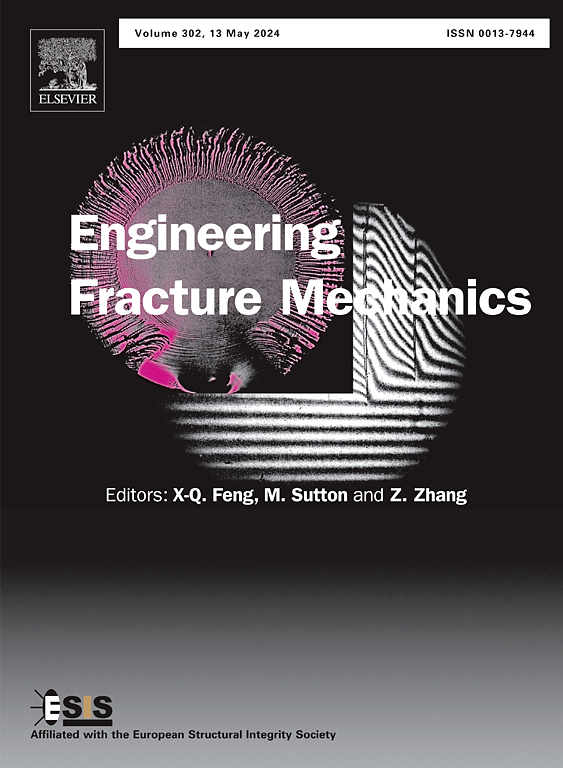Machine learning approaches for predicting rock mode I fracture toughness: Insights from ISRM suggested CCNBD and SCB tests
IF 4.7
2区 工程技术
Q1 MECHANICS
引用次数: 0
Abstract
Mode I fracture represents a prevalent failure mechanism in rocks, attributed to the typically significantly lower tensile strength compared to their shear strength. The cracked chevron notched Brazilian disc (CCNBD) and semi-circular bend (SCB) tests are two techniques recommended by the International Society for Rock Mechanics (ISRM) for assessing mode I fracture toughness and are commonly employed in laboratory research. The fracture toughness of a rock specimen depends on its geometric dimensions and mechanical properties. Clarifying the geometric size impacts of various types of rocks in mode I fracture toughness testing is both costly and time-consuming. Machine learning offers a predictive approach for determining the fracture toughness of rocks. This investigation leverages six sophisticated machine learning models, encompassing decision regression tree (DRT), random regression forest (RRF), generalized regression neural network (GRNN), gaussian process regression (GPR), support vector machine (SVM) and generalized additive model (GAM), to forecast the mode I fracture toughness within the CCNBD and SCB testing paradigms. The variance in input variables between the two tests is attributed to the distinct geometrical attributes of the CCNBD and SCB specimens. Tensile strength, specimen radius, specimen thickness and three dimensionless parameters related to the initial and final cracked chevron notch lengths and specimen thickness are the input variables for CCNBD tests. Tensile strength, specimen radius, specimen thickness, notch length and the span of the two loading cylindrical rollers are input variables for SCB tests. Five evaluation indicators of machine learning models, i.e., mean absolute error, mean absolute percentage error, mean square error, root mean square error and coefficient of determination, are adopted to comprehensively evaluate the predictive performance of these models. According to the evaluative metrics, the DRT and GPR models emerge as the most effective for CCNBD and SCB tests, respectively. The significance of input variables for the prediction of mode I fracture toughness was delineated employing Shapley additive explanations. The findings underscore the paramount influence of tensile strength on mode I fracture toughness within both CCNBD and SCB testing methodologies. Considering the influences of sample value differences in CCNBD and SCB datasets and taking mean absolute percentage error and coefficient of determination as the evaluation indicators, the machine learning models are more suitable in predicting mode I fracture toughness in CCNBD tests than that in SCB tests. This study delivers valuable insights for the prediction of mode I fracture toughness in rocks via machine learning techniques.
求助全文
约1分钟内获得全文
求助全文
来源期刊
CiteScore
8.70
自引率
13.00%
发文量
606
审稿时长
74 days
期刊介绍:
EFM covers a broad range of topics in fracture mechanics to be of interest and use to both researchers and practitioners. Contributions are welcome which address the fracture behavior of conventional engineering material systems as well as newly emerging material systems. Contributions on developments in the areas of mechanics and materials science strongly related to fracture mechanics are also welcome. Papers on fatigue are welcome if they treat the fatigue process using the methods of fracture mechanics.

 求助内容:
求助内容: 应助结果提醒方式:
应助结果提醒方式:


